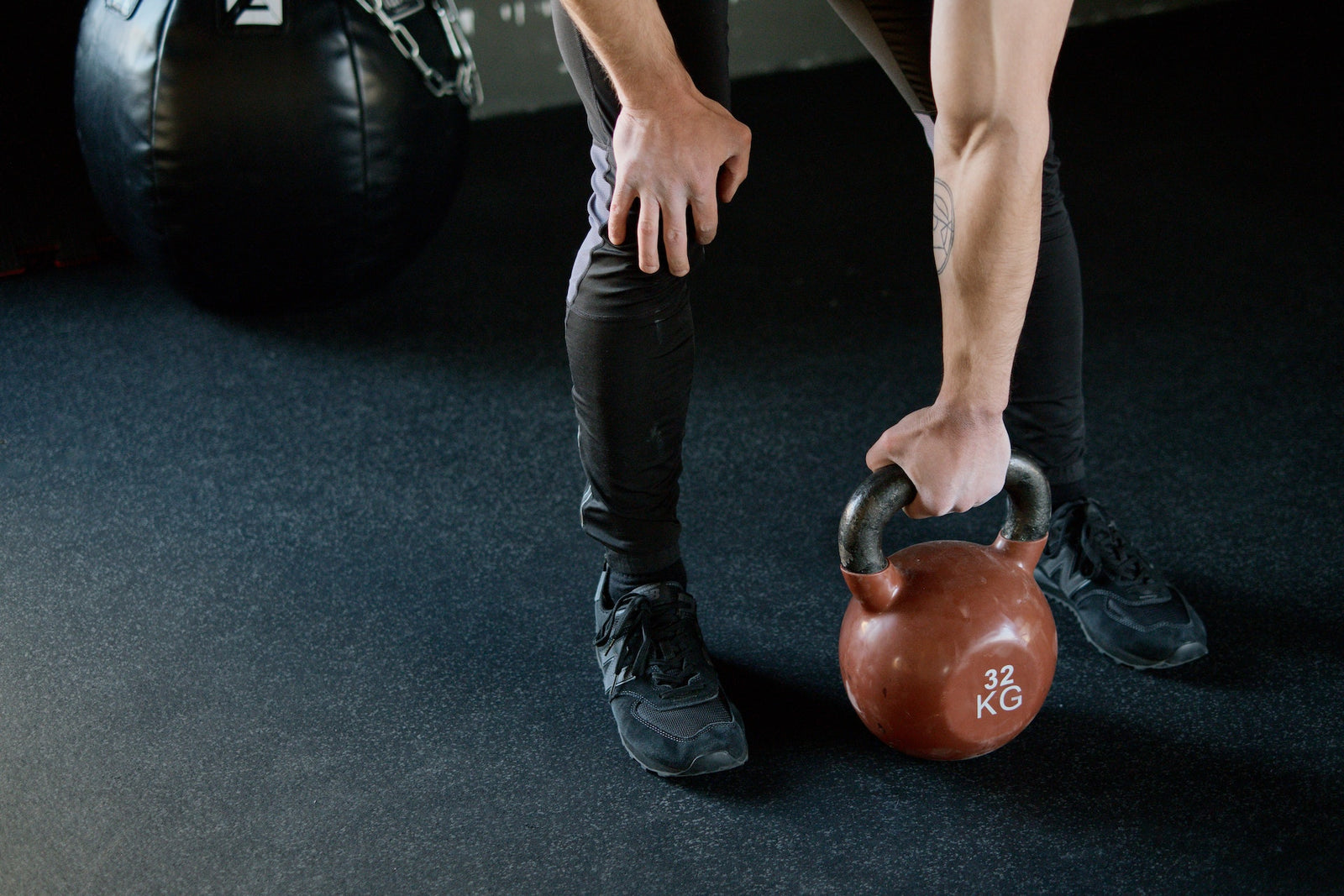Are you tired of the same old gym routine? Want to mix things up and try something new? Look no further than sandbag and kettlebell training.
Sandbag training involves using a bag filled with sand to perform a variety of strength and conditioning exercises.
On the other hand, kettlebell training involves using a cast-iron weight with a handle to perform a range of exercises that target multiple muscle groups.
Resistance training is crucial for building muscle mass, increasing strength, and improving overall fitness. By incorporating sandbag and kettlebell training into your routine, you can challenge your muscles in new ways and take your fitness to the next level.
In this article, we'll explore the benefits of sandbag and kettlebell training, the various exercises you can do, and which is better suited for your fitness goals.
By the end of this article, you'll better understand which training method is right for you and how to incorporate it into your fitness routine.
So, let's get started!

History and Origin of Sandbag Training
Sandbag training has been around for centuries and has been used by athletes, military personnel, and firefighters to develop functional strength and conditioning.
It originated in ancient Persia and was used to train soldiers.
Benefits of Sandbag Training
Functional Strength and Stability
Sandbag training focuses on functional movements that mimic real-life activities, such as lifting and carrying heavy objects. This makes it an excellent option for developing functional strength and stability.
Improves Grip Strength
Sandbag training requires you to grip the bag in a way that you would not do with other training tools like barbells or dumbbells. This makes sandbag training an excellent way to improve your grip strength and develop forearm muscles.
Versatility in Training
With a sandbag, you can perform a variety of exercises that engage multiple muscle groups. This is because sandbags can be carried, lifted, thrown, and even slammed, making them a great option for full-body workouts.
Targets Multiple Muscle Groups
Sandbag training engages multiple muscle groups at the same time, making it an efficient way to build strength and endurance.
Types of Sandbag Training
Loaded Carries
One of the simplest and most effective sandbag exercises is the loaded carry. This involves carrying a heavy sandbag for a certain distance or time, which can help improve your grip strength, core stability, and overall strength.
Squats and Lunges
Squats and lunges with a sandbag provide an added challenge to these traditional exercises. The unstable nature of the sandbag requires you to stabilize your body, which engages your core muscles and improves your balance and coordination.
Pushes and Pulls
Sandbag training can include pushing and pulling exercises, such as the sandbag push press or rows. These exercises target your upper body muscles and can help improve your posture and upper body strength.
Rotational Movements
Rotational movements, such as the sandbag rotational throw, can help improve your core strength and stability, as well as your power and explosiveness.

History and Origin of Kettlebell Training
Kettlebell training has been around since the 1700s in Russia. It was first used by weightlifters to develop their strength, endurance, and explosive power.
But today, it's become a popular form of strength training all over the world.
Benefits of Kettlebell Training
Full-Body Conditioning
Kettlebell training is the ultimate full-body workout. It engages multiple muscle groups at once, making it an efficient way to improve your overall fitness and conditioning.
Improves Cardiovascular Health
One of the best things about kettlebell training is that it gets your heart rate up and improves your cardiovascular health. Plus, it can help you burn calories and shed some extra pounds.
Enhances Flexibility and Mobility
If you want to improve your flexibility and mobility, then kettlebell training is worth considering. It requires you to move your body through different ranges of motion, which can help reduce your risk of injury and improve your posture.
Targets Multiple Muscle Groups
Kettlebell training targets multiple muscle groups, including your core, glutes, hamstrings, and shoulders. This makes it a great way to build strength and muscle mass.
Types of Kettlebell Training
Swings
The kettlebell swing is one of the most popular kettlebell exercises. It involves swinging the kettlebell between your legs and then up to shoulder height. This exercise targets your glutes, hamstrings, and core muscles.
Turkish Get-Ups
The Turkish get-up is a full-body exercise that involves lying on the ground with the kettlebell and standing up while holding the kettlebell overhead. This exercise targets your core, shoulders, and hips.
Cleans and Presses
Kettlebell cleans and presses involve lifting the kettlebell from the ground to shoulder height and then pressing it overhead. This exercise targets your shoulders, triceps, and core muscles.
Snatches
Kettlebell snatches involve lifting the kettlebell from the ground to overhead in one smooth motion. This exercise targets your shoulders, core, and hamstrings.
Similarities Between Sandbag And Kettlebell Training
When it comes to sandbag and kettlebell training, there are several similarities between the two.
Let's take a closer look at a few:
Target Multiple Muscle Groups
Both sandbag and kettlebell training are designed to work multiple muscle groups at once. This means you can get a full-body workout in a shorter amount of time, making these training methods ideal for those with busy schedules.
Improve Grip Strength
Another similarity between sandbag and kettlebell training is that they both improve grip strength.
The sandbag's awkward shape and the kettlebell's off-center weight make them both challenging to hold onto, forcing your grip to work harder and become stronger over time.
Increase Endurance and Cardiovascular Health
Both sandbag and kettlebell training can also help improve your endurance and cardiovascular health. The high-intensity nature of these workouts increases your heart rate and challenges your body to work harder, leading to improved cardiovascular fitness over time.
Differences between Sandbag and Kettlebell Training
While there are several similarities between sandbag and kettlebell training, there are also some key differences to consider.
These are:
Types of Movements
One of the biggest differences between sandbag and kettlebell training is the types of movements you can do.
Sandbag training typically involves exercises, like loaded, carries, squats, lunges, and rotational movements.
Kettlebell training, on the other hand, includes exercises like swings, Turkish get-ups, cleans and presses, and snatches.
Weight Distribution
Another key difference between sandbag and kettlebell training is the weight distribution. With a sandbag, the weight is evenly distributed throughout the bag, making it more stable and easier to control.
With a kettlebell, the weight is off-center, which makes it more challenging to control and requires more stabilization from your core.
Ease of Use
In terms of ease of use, sandbag training is generally considered to be easier for beginners. The exercises are simpler to perform and require less technical skill than kettlebell exercises, which can take some time to master.
Availability and Cost
Finally, when it comes to availability and cost, sandbags are typically cheaper and easier to find than kettlebells. Sandbags can be made at home using common materials like duffel bags and sand, while kettlebells can be expensive and difficult to find in some areas.
Sandbag vs Kettlebell Training: Which One Is Better
Now that we've taken a closer look at sandbag and kettlebell training, you may be wondering which one is better.
The truth is, there's no one-size-fits-all answer.
The best training method for you will depend on several factors, including:
Fitness Goals
Your fitness goals should be the primary consideration when deciding between sandbag and kettlebell training.
If you're looking to build functional strength and stability, sandbag training may be the way to go.
If you're looking to improve your cardiovascular fitness and full-body conditioning, kettlebell training may be more appropriate.
Fitness Level and Experience
Your fitness level and experience are also important factors to consider. Sandbag training may be easier for beginners, while kettlebell training may require more technical skill and experience.
If you're new to resistance training, you may want to start with sandbag training and work your way up to kettlebell exercises as you gain more experience.
Physical Limitations
If you have any physical limitations or injuries, you should also take those into account when choosing between sandbag and kettlebell training.
Sandbag training may be less jarring on your joints and may be easier to modify to accommodate injuries.
Kettlebell training, on the other hand, may require more precision and could exacerbate certain injuries if not performed correctly.
Personal Preferences
Finally, your personal preferences should also be considered when deciding between sandbag and kettlebell training.
Do you enjoy the challenge of lifting an awkward, off-center weight like a kettlebell?
Or do you prefer the simplicity of sandbag exercises?
Ultimately, the best training method for you is the one that you enjoy and can stick with over the long term.
Pros and Cons of Kettlebell Training
Pros
Full-Body Conditioning
One of the main benefits of kettlebell training is its ability to provide full-body conditioning. Kettlebell exercises work multiple muscle groups simultaneously, helping you to build strength and endurance throughout your entire body.
Targets Multiple Muscle Groups
Kettlebell exercises are also great for targeting multiple muscle groups. From your shoulders and back to your legs and core, kettlebell exercises engage a variety of muscle groups and can help you build functional strength and stability.
Enhances Flexibility and Mobility
In addition to strength and conditioning, kettlebell training can also help enhance your flexibility and mobility. Many kettlebell exercises require a full range of motion, which can help improve your flexibility and mobility over time.
Cons
Limited Types of Movements
While kettlebell training is great for full-body conditioning and targeting multiple muscle groups, it does have some limitations.
The types of movements you can perform with a kettlebell are somewhat limited, which could lead to boredom or a plateau in your training progress.
Limited Weight Options
Another potential drawback of kettlebell training is the limited weight options. Unlike other types of free weights, such as dumbbells, only a few weight options are available for kettlebells.
This may make it difficult to progress in your training over time.
Potential Risk of Injury
Finally, there is a potential risk of injury associated with kettlebell training. Because kettlebell exercises often require dynamic, full-body movements, they can be more challenging and potentially risky than other types of resistance training exercises.
To avoid injury, it's important to use proper form and start with lighter weights until you feel confident with your technique.
In Summary: Sandbag Vs Kettlebell Training
They are both versatile tools that can be used for a variety of movements and exercises, and they both target multiple muscle groups while improving grip strength and cardiovascular health.
When it comes to choosing between sandbag and kettlebell training, there is no clear winner.
It ultimately depends on individual fitness goals, experience, physical limitations, and personal preferences.
Sandbag training may be more beneficial for those seeking functional strength and stability, while kettlebell training may be more suitable for full-body conditioning and improving flexibility and mobility.
Regardless of which training tool you choose, resistance training is crucial for overall health and fitness.
It helps build and maintain muscle mass, improves bone density, and reduces the risk of chronic diseases such as diabetes and heart disease.
Incorporating sandbag or kettlebell training into your workout routine can help you achieve your fitness goals and improve your overall well-being.
So there you have it, a detailed comparison of sandbag and kettlebell training.
Ultimately, the best choice is the one that suits your personal fitness goals and preferences.
Remember, the most important thing is to stay consistent and make resistance training a part of your regular workout routine for optimal results.


